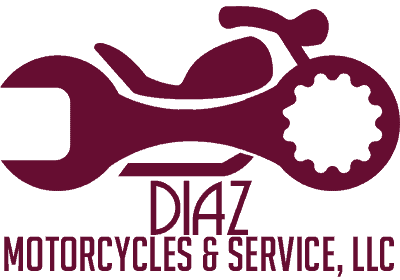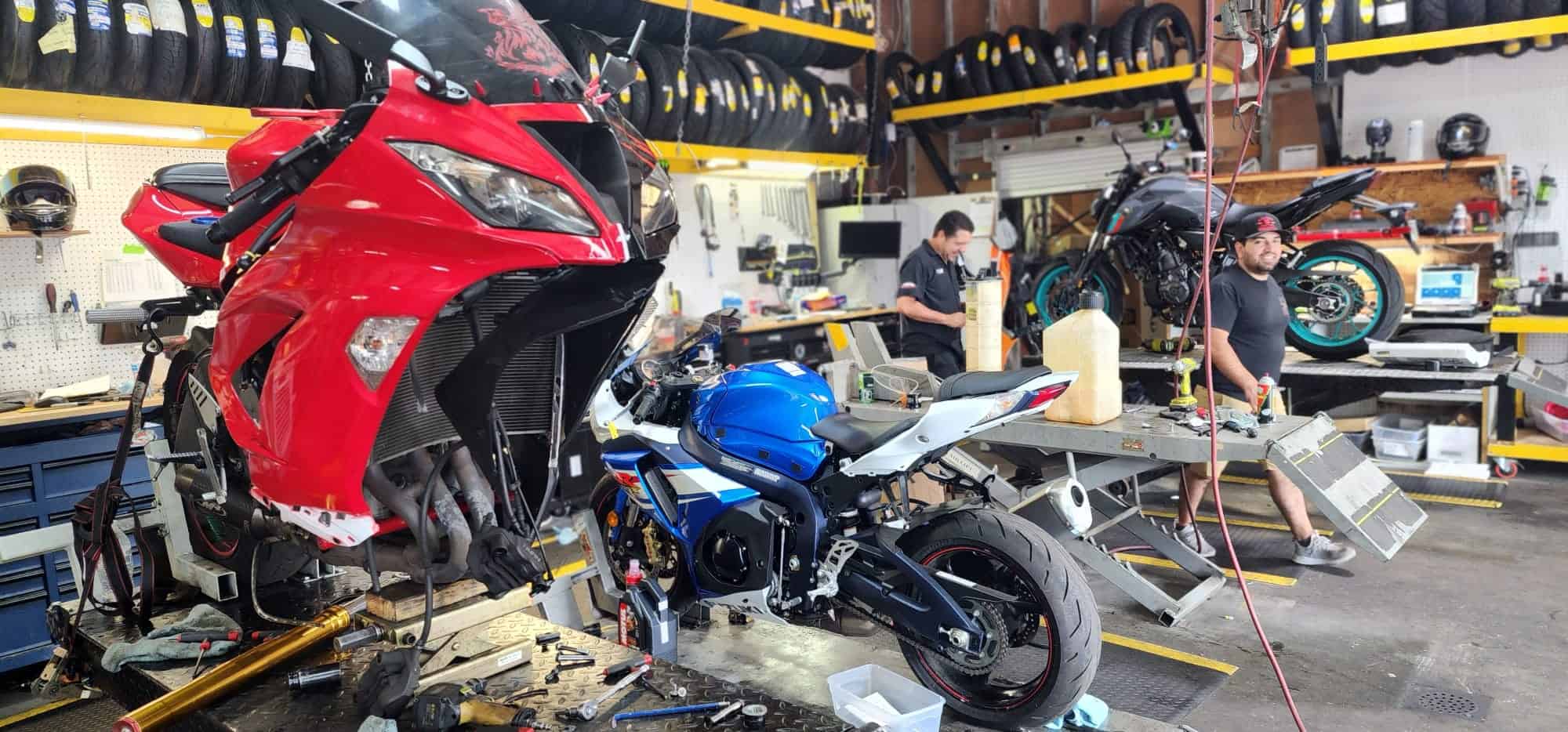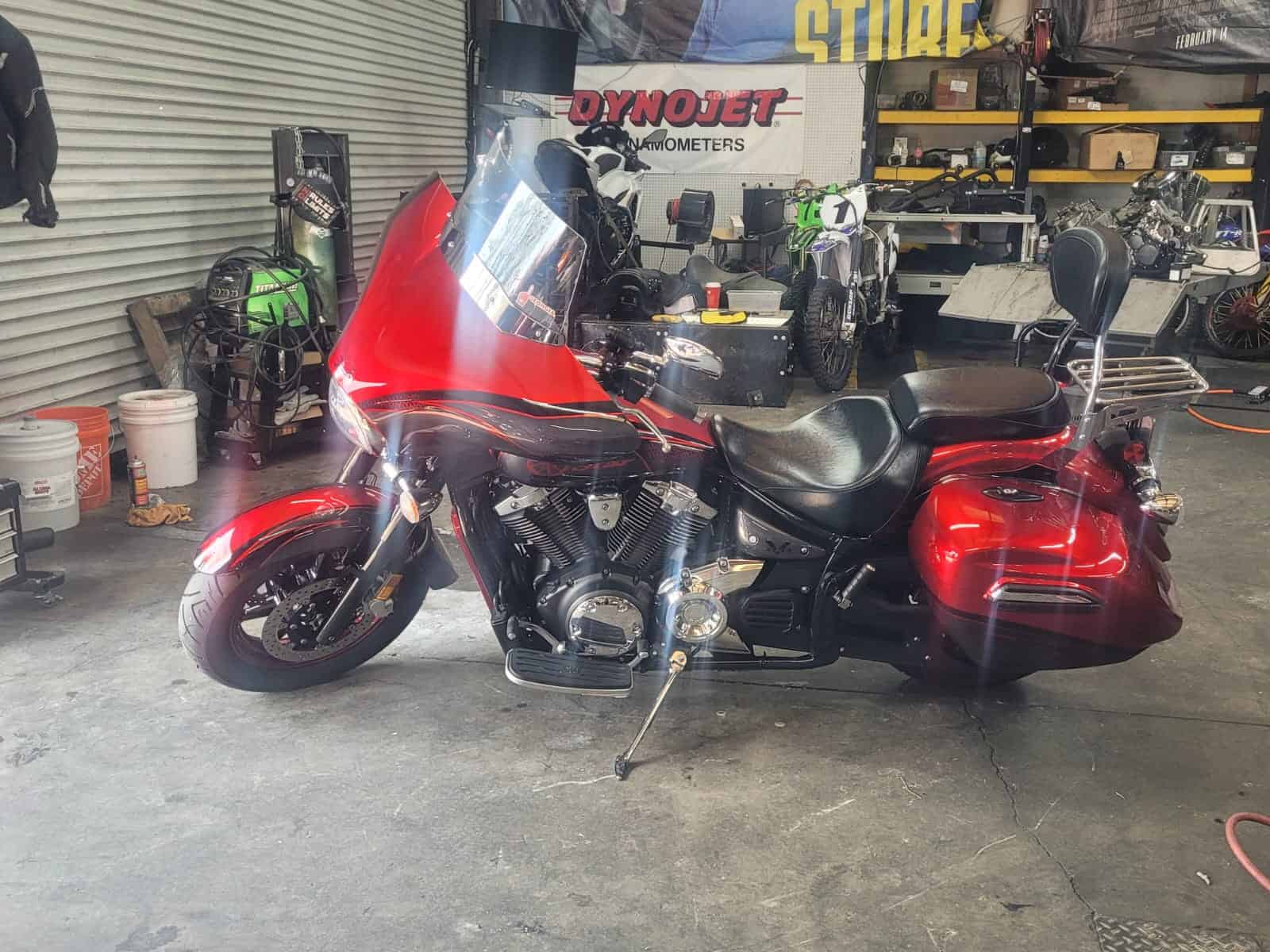Summary:
How Professional Motorcycle Diagnosis Really Works
Effective motorcycle maintenance starts with listening—not just to your bike, but to you. We pay attention to your description of the problem, ask specific questions about when it happens, and observe how your bike behaves during startup or a test ride.
This conversation isn’t just small talk. Whether problems happen when the engine’s cold or warm, under load or at idle, and how long symptoms have been developing all provide crucial clues about what’s actually wrong.
Our systematic approach means checking related systems, not just the obvious problem area. Engine issues might stem from fuel delivery problems. Electrical symptoms could trace back to a failing charging system. Poor performance might actually be a clogged air filter, not expensive internal engine damage.
Engine Diagnosis: When Your Motor Tells Its Story
Engine problems rarely happen in isolation, which is why effective engine repair starts with understanding how all the systems work together. Your motorcycle’s engine depends on proper compression, fuel delivery, ignition timing, and air intake working as a team.
Compression testing reveals internal engine health without tearing anything apart. Low compression in one cylinder points to valve or piston ring issues. Uneven compression across cylinders suggests different problems entirely. These tests provide hard data about engine condition before any major disassembly begins, potentially saving you hundreds in unnecessary repairs.
Fuel system diagnosis involves checking fuel pressure, injector operation, and fuel quality. Modern fuel-injected bikes require specific pressure ranges to operate properly. Too little pressure causes lean running and poor performance. Too much pressure can flood the engine or cause rich running conditions that waste fuel and reduce power.
Ignition system problems show up in predictable ways. Weak spark causes misfiring under load—you’ll feel it as hesitation or stumbling when accelerating. Incorrect timing affects power delivery and can cause engine knock that damages internal components. Testing ignition components systematically reveals exactly where the problem lies without replacing parts unnecessarily.
We also check engine management systems on modern bikes. Error codes stored in your motorcycle’s computer provide starting points for diagnosis, but they’re symptoms, not solutions. A code indicating an oxygen sensor problem might actually point to a vacuum leak or fuel delivery issue affecting sensor readings.
Electrical System Diagnosis: Solving the Invisible Problems
Engine problems rarely happen in isolation, which is why effective engine repair starts with understanding how all the systems work together. Your motorcycle’s engine depends on proper compression, fuel delivery, ignition timing, and air intake working as a team.
Compression testing reveals internal engine health without tearing anything apart. Low compression in one cylinder points to valve or piston ring issues. Uneven compression across cylinders suggests different problems entirely. These tests provide hard data about engine condition before any major disassembly begins, potentially saving you hundreds in unnecessary repairs.
Fuel system diagnosis involves checking fuel pressure, injector operation, and fuel quality. Modern fuel-injected bikes require specific pressure ranges to operate properly. Too little pressure causes lean running and poor performance. Too much pressure can flood the engine or cause rich running conditions that waste fuel and reduce power.
Ignition system problems show up in predictable ways. Weak spark causes misfiring under load—you’ll feel it as hesitation or stumbling when accelerating. Incorrect timing affects power delivery and can cause engine knock that damages internal components. Testing ignition components systematically reveals exactly where the problem lies without replacing parts unnecessarily.
We also check engine management systems on modern bikes. Error codes stored in your motorcycle’s computer provide starting points for diagnosis, but they’re symptoms, not solutions. A code indicating an oxygen sensor problem might actually point to a vacuum leak or fuel delivery issue affecting sensor readings.
Brake Service: Safety Issues That Demand Immediate Attention
Brake problems demand immediate attention, but proper diagnosis prevents unnecessary repairs while ensuring your safety. Our brake service starts with examining hydraulic components, friction materials, and mechanical linkages as integrated systems rather than individual parts.
Hydraulic testing checks brake fluid condition, system pressure, and component operation. Old brake fluid absorbs moisture, which reduces braking performance and causes internal corrosion that leads to expensive repairs. Pressure testing reveals whether master cylinders, brake lines, and calipers maintain proper hydraulic pressure under load.
Brake pad and rotor inspection goes beyond measuring thickness. Pad wear patterns indicate alignment problems, sticking calipers, or rotor warping. Rotor condition affects braking performance and pad life. Warped rotors cause brake pulsation and uneven pad wear that compromises stopping power when you need it most.
Common Brake Problems and What They Actually Mean
Spongy brake feel usually indicates air in the hydraulic system or worn brake fluid, but it can also signal internal master cylinder problems or flexible brake lines that expand under pressure. Proper diagnosis determines whether you need simple bleeding or component replacement, preventing unnecessary expense while ensuring reliable braking.
Brake drag happens when brakes don’t release completely after application. This can stem from sticking pistons, warped rotors, or adjustment problems. Drag causes excessive heat buildup, premature pad wear, and reduced fuel economy. More importantly, it affects your bike’s handling and can lead to brake failure during emergency stops.
Brake noise isn’t always a sign of worn pads. Glazed pads, contaminated friction surfaces, or loose hardware can cause squealing or grinding sounds. Different noises point to different problems, and experienced diagnosis identifies the actual cause rather than assuming pad replacement will solve everything.
Uneven braking performance between front and rear brakes affects motorcycle stability and stopping distance. This can result from contaminated brake fluid, air in the system, or mismatched brake pad compounds. Proper diagnosis ensures balanced braking performance that maintains control during emergency stops.
We also check brake lines for damage, corrosion, or age-related deterioration. Rubber brake lines have limited service life and can fail internally without obvious external damage. Steel braided lines offer improved performance but require different inspection procedures to ensure long-term reliability.
Preventive Diagnosis: Catching Problems Before They Cost You
The smartest motorcycle maintenance approach identifies developing problems before they cause roadside breakdowns or expensive damage. Regular diagnostic checks during routine service catch issues early when they’re easier and cheaper to fix.
Fluid analysis reveals internal engine condition without disassembly. Oil analysis shows wear metal content, contamination levels, and additive depletion. Coolant analysis indicates internal corrosion, contamination, or chemical breakdown that affects cooling system performance. These tests often reveal problems months before symptoms become obvious.
Performance testing during routine service identifies gradual changes that might indicate developing problems. Compression readings, charging system output, and brake performance measurements create baseline data for future comparison. Trends in these measurements often reveal problems before symptoms become obvious to riders.
Diagnostic equipment continues advancing, making it possible to identify problems that would have been undetectable just a few years ago. Modern scan tools monitor dozens of sensors simultaneously, recording data that helps identify intermittent problems or subtle performance changes that affect reliability.
Regular diagnostic checks also verify that previous repairs solved the original problem without creating new issues. This follow-up testing ensures that complex repairs actually address root causes rather than just treating symptoms, preventing the frustration of recurring problems.
The investment in proper diagnostic procedures pays dividends in reliability, safety, and long-term maintenance costs. Accurate diagnosis prevents unnecessary repairs, reduces comebacks, and ensures that your motorcycle receives exactly the service it needs without wasting your money on guesswork.
What to Expect from Professional Motorcycle Diagnosis
Professional motorcycle diagnosis combines technical expertise with systematic procedures that identify problems accurately and efficiently. The process takes time because thoroughness prevents misdiagnosis and unnecessary repairs that waste your money.
Expect us to ask detailed questions about symptoms, riding conditions, and maintenance history. This information guides our diagnostic process and helps identify likely problem areas. Be specific about when problems occur and what you’ve noticed changing about your bike’s performance.
Quality diagnosis includes written documentation of findings, test results, and recommended repairs. This transparency helps you understand what’s wrong and why specific repairs are necessary. It also provides a baseline for future reference if related problems develop.
When you need reliable motorcycle diagnosis and repair in Cobb County, GA, trust the experienced team at Diaz Motorcycles and Service, LLC. Our systematic approach to problem-solving ensures accurate diagnosis and effective repairs that get you back on the road safely.



